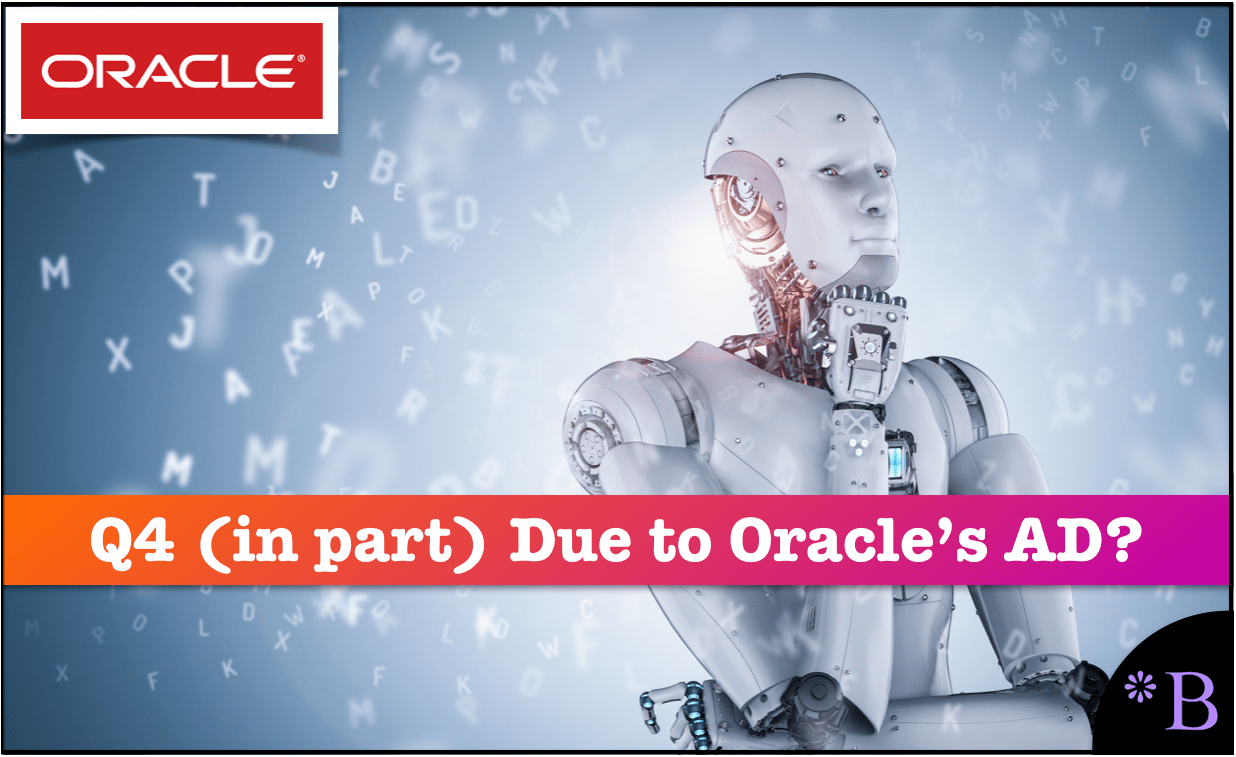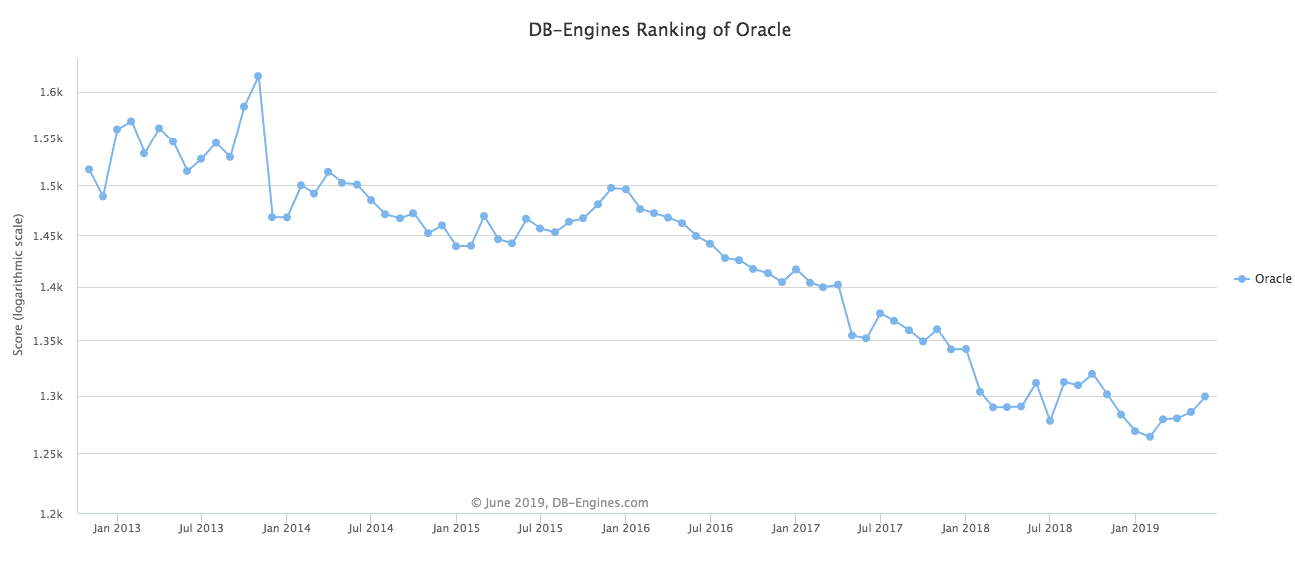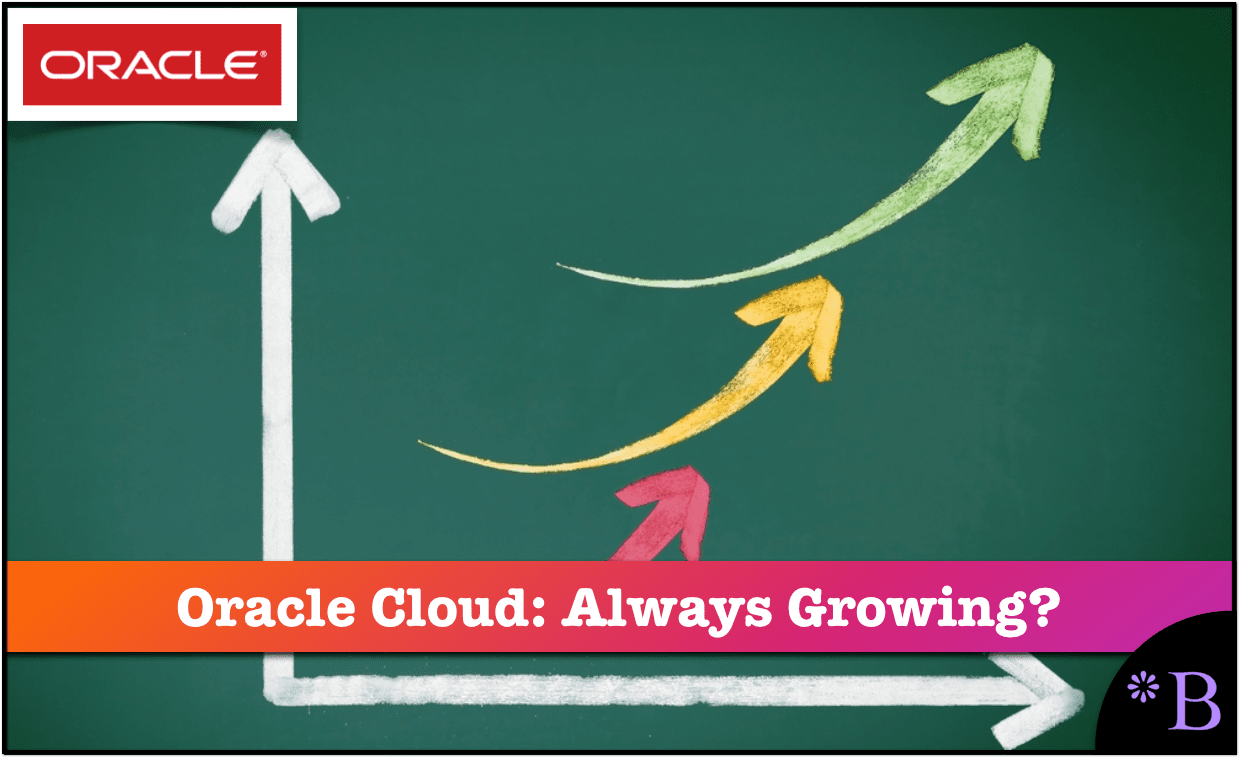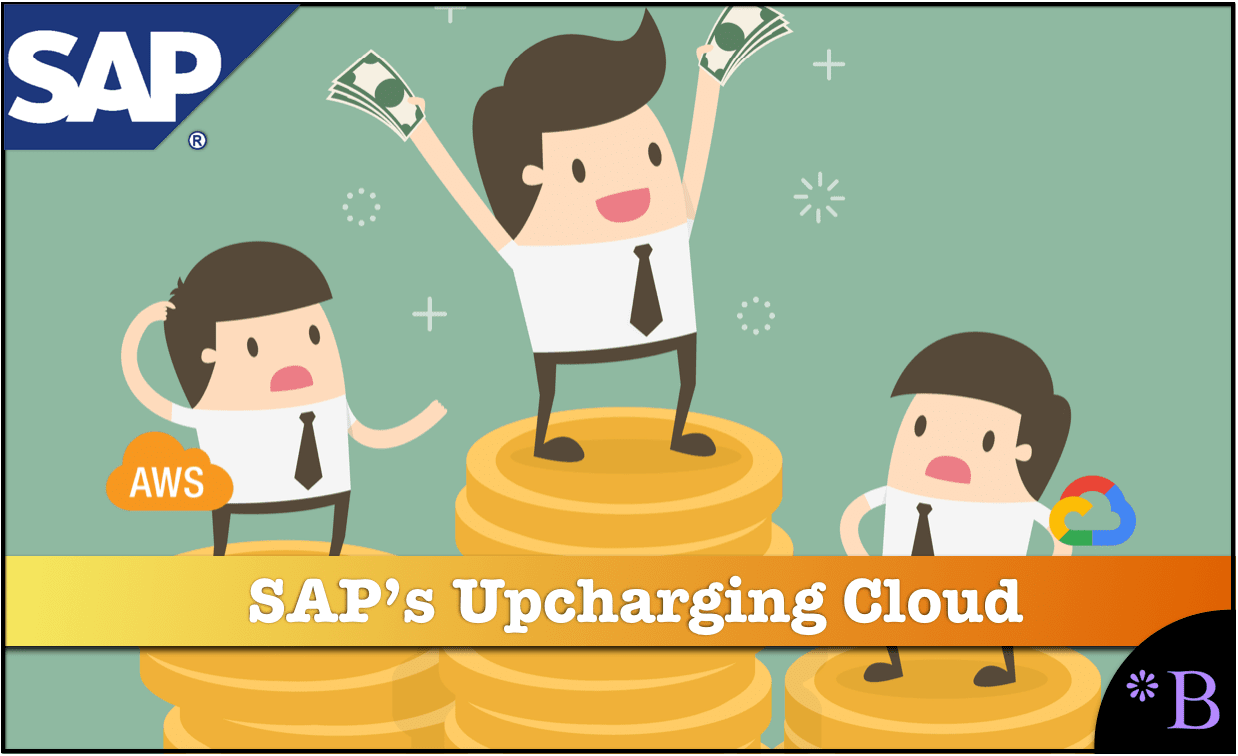How Accurate Was Bob Evans on Oracle’s 2018 Q4 Being Due to the Autonomous Database?
Executive Summary
- Bob Evans runs a PR firm that promoted the idea of Oracle gaining traction with the autonomous database.
- We review the accuracy of this article.

Introduction
This article we will review was a paid placement by Oracle on a website called Cloud Wars. It was paid for by Oracle. Let us see how much of it is true or likely to be true.
Our References for This Article
If you want to see our references for this article and other related Brightwork articles, see this link.
Lack of Financial Bias Notice: The vast majority of content available on the Internet about Oracle is marketing fiddle-faddle published by Oracle, Oracle partners, or media entities paid by Oracle to run their marketing on the media website. Each one of these entities tries to hide its financial bias from readers. The article below is very different.
- This is published by a research entity, not some dishonest entity that is part of the Oracle ecosystem.
- Second, no one paid for this article to be written, and it is not pretending to inform you while being rigged to sell you software or consulting services. Unlike nearly every other article you will find from Google on this topic, it has had no input from any company's marketing or sales department. As you are reading this article, consider how rare this is. The vast majority of information on the Internet on Oracle is provided by Oracle, which is filled with false claims and sleazy consulting companies and SAP consultants who will tell any lie for personal benefit. Furthermore, Oracle pays off all IT analysts -- who have the same concern for accuracy as Oracle. Not one of these entities will disclose their pro-Oracle financial bias to their readers.
Booming Demand for the Self-Driving Database?
“After a year of relentless hype about its Autonomous Database, Oracle yesterday said booming demand for the self-driving database was a huge factor behind the company’s blowout numbers for the final quarter of its fiscal year.
In just the 3 months ending May 31, Oracle customers and prospects ran 5,000 trials of the Autonomous Database, founder and chairman Larry Ellison said. And those types of trials are beginning to generate significant revenue.
“In Q4, we saw a surge in database license sales,” Ellison said to open his prepared remarks on the earnings call.”
Right. But this does not mean it is true. Larry Ellison lies quite frequently; therefore, using a quotation from Larry Ellison does not make it accurate, especially without corroboration.
This article provides evidence why we have concluded that what Larry Ellison stated is not true.
Also, this is an excellent time to point out that nowhere on the Cloud Wars website does it explain that the website is an outlet for Evans Strategic Communications.
Is Oracle Gaining Market Share?
“We also saw very rapid growth in sales of those database options required to run our Autonomous Database. We continue to gain overall database market share as we migrate our database users to the cloud.”
The Oracle database is not gaining market share. It has been slowly losing market share for more than five years.

The following is from DB Engines, which tracks database usage. This graph makes Oracle’s decline look larger, as the base is not set to zero. However, if we look at the high point of October 2013 (roughly 1.625k) and use the most recent value (of 1.3k), the Oracle database has lost approximately 17% of its popularity.
Bob Evans did not fact-check a statement by Larry Ellison that is widely known in the industry not to be accurate.
Safra Catz is a Reliable Source of the Autonomous Database.
“Oracle CEO Safra Catz put some specific numbers around the impact Autonomous Database and its related options are having on the overall database business for the company. The bullish comments from the typically reserved Catz underscore the enthusiasm customers are feeling for the new self-patching and self-updating database.
“Technology license growth was up 19%, making it abundantly clear that customers are investing in the Oracle platform,” Catz said in her discussion of the company’s Q4 and full-year results. And the key database options necessary to run the Oracle Autonomous Database service grew 21%.”
Safra Catz would say anything to make a good impression on Wall Street. What Oracle defines as technology license growth is unclear, but is this the Autonomous Database?
Is Oracle Cloud Growing?
“Catz then brought up the company’s recent cloud partnership with Microsoft—a blockbuster agreement that I analyzed recently in Microsoft-Oracle Shocker: Customers Win as #1 and #6 Vendors Pair Up—and predicted it would become another growth engine for not only the new self-driving database but also the Oracle Cloud overall.
“In addition, the recent interconnect agreement with Microsoft will only help accelerate the transition from on premise database to the Autonomous Database service,” Catz said.”
The Oracle Cloud is not growing in usage. Its usage is so low that it usually is not measured by those entities that measure usage. This is because it is below 1% of the overall market for cloud services.

Oracle has been making claims about the growth of Oracle Cloud for years now. If the growth story is occurring, why has the Oracle Cloud not passed 1% of the total cloud services market? Continual rapid growth, without being, is not a logical possibility. Over the past ten years, if you had cancer in your body that was growing at the Oracle Cloud rate, you would be fine.
Secondly, if Oracle Cloud is growing, why is Oracle partnering with Microsoft and its Azure cloud service offering? The reason is that, as we covered in the article The Problem with the Oracle Cloud and Colocation, Oracle is not investing much in its cloud data centers. As we will cover further in the article, Oracle prefers to redirect funds to data center investment to stock buybacks.

We think that Oracle is jealous of SAP’s UaaS business.
We predicted that Oracle would see how SAP is marking up other cloud service providers (creating the Upcharge as a Service {UaaS} model in the article How to Understand SAP’s Upcharge as a Service Cloud. And that they would follow suit. The money is too easy, and Oracle cannot resist the lure of easy money.
Is Larry Ellison Bullish on the Autonomous Database?
“We’re really optimistic about this business,” Ellison said. “And the optimism is not just due to Safra’s guidance, which is based on sales forecasts. The thing that I find fascinating are the consumption-data curves, which shows our consumption rate [by customers] is growing much faster than the sales team’s currently anticipating.
“To me, that’s just wonderfully encouraging. And hopefully this is the beginning of the trend.”
Among those Autonomous Database customers, two intriguing patterns emerged:
- 20% of Autonomous Database customers have never used Oracle Database before; and
- 40% of Autonomous Database customers are running workloads that had not previously been run on an Oracle database.
All of these numbers and commentary from Oracle reinforce in my mind a very big question about the Oracle Autonomous Database: if it’s so wonderful—and the results above indicate that lots of customers believe it is—then why haven’t other major database vendors begun offering competitive products?”
Oracle is desperate to stop customer migration to AWS, specifically to the AWS-managed database service called RDS. AWS’s RDS dramatically reduces the Oracle database’s maintenance cost and provides far better support than anything provided by Oracle. While the Oracle AD is fake, the RDS (although it is not suitable for every situation) is a real innovation. The AWS RDS is also something that the Oracle database usually does not run as a multitenant service by AWS. This allows AWS to obtain significant scale economies and keep many customers in a single Oracle (MySQL, MariaDB, etc.) database. This is something Oracle does not offer in the Oracle Cloud does not provide.
Larry Ellison’s everything in the above quote is what Oracle wants customers to believe in fighting back against AWS.
Why Aren’t Microsoft and IBM Offering an Autonomous Database?
Bob Evans arrives at an interesting question — one that he probably does not want readers to think about too deeply.
“Why aren’t we seeing Microsoft and IBM disclose roadmaps for their own self-repairing and self-securing databases? Do they not feel customers will be interested in such a product? Or is it that—as Ellison has claimed in the past—no other company can match what Oracle’s delivering?”
We have an entirely different explanation.
We covered in the article How Real is Oracle’s Autonomous Database? The Autonomous Database is fake. It is a marketing construct. We think several reasons are explained in detail in the article — but overall, Oracle’s story on the AD does not make sense. One of the vast pieces of evidence is that the AD only works when running from the cloud, not on-premises. This gives no way to know if it runs without assistance from Oracle engineers working in the background.
Pay no attention to the Oracle DBAs working at the Oracle Cloud — and behind the curtain. It takes a lot of Oracle resources to make Oracle’s AD so autonomous!
No Loss of DBAs with the AD?
“Either way, for Oracle customers, the big value is that their entire organizations will benefit from the security features of the Autonomous Database, and will be able to redeploy DBAs to work on more-valuable projects because the new database handles the chores those DBAs formerly had to oversee.”
Oracle is in a pickle — it wants to and has claimed the AD can be run entirely without DBAs. But Oracle also wants not to alienate DBAs — so it walks lightly (and inconsistently) when describing the relationship between the AD and the DBA.
The AD Must Use the Oracle Cloud?
“One other critical point on this big win for Oracle: it means the company’s “Gen2” IaaS business is also picking up. Because the only way customers can get the Autonomous Database is by agreeing to have it run on Oracle’s Gen2 IaaS.”
As we stated, the AD does not work on-premises.
However why?
We have an answer as to why. The Autonomous Database is not autonomous.
Let Oracle Take Control of Your Database?
“Ellison’s betting that customers will accept that bundle because of the unique features of the Autonomous Database, which as he put it in a press release announcing the Q4 results, “encrypts all your data, backs itself up, tunes itself, upgrades itself, and patches itself when a security threat is detected.”
“It does all of this autonomously—while running—without the need for any human intervention, and without the need for any downtime. No other cloud infrastructure provides anything close to these autonomous features.””
Oracle is one of the least trustworthy software vendors in the world. Even if the AD worked, it would be extremely odd to hand over control of the Oracle database, its upgrade, patches, etc., to Oracle. Oracle would instantly upgrade your databases and wipe out your IT budget. This would be like handing over the authority to create invoices to Oracle.
As we covered in the article What Percentage of Oracle Customers are on What Oracle Database Version?, the vast majority of Oracle customers are running old versions of the Oracle database. Every new advanced feature Oracle adds significantly increases the overhead and cost of Oracle — in staff hours in addition to the price. It is now a bloated DB that Oracle constantly pressures its customers to use in wasteful manners. The Oracle database’s later versions are a liability to all but customers with the most elaborate requirements and extravagant budgets. But more broadly, there is not much of the new functionality beyond 8 and 10 that most companies need.
So, the real technical need to upgrade is small.
And why don’t we hear about this issue with Oracle? As with SAP, the providers are on the payroll (Evans Strategy Communications being just one example). It is not to the same extent as SAP — SAP is unparalleled in controlling information providers. However, the income streams still flow to media, analysts, and consulting entities that support Oracle’s talking points.
Thank You, Larry Ellison — for the Cash?
“Indeed, the Cloud Wars will be much more interesting if Oracle can parlay its leadership position in the traditional database business into big success in cloud PaaS and IaaS.
That’s surely the bet Larry Ellison is making.”
It looks like Bob Evans is really impressed with everything he heard — and also impressed with the check Evans Strategic Communications received to write this “article.”
TechCrunch described Bob Evans in the following terms.
“Bob Evans has a colorful past. He works at Oracle these days as what I would call a king’s blogger except that he isn’t doing very well even with the apparent influence of the king himself.
Bob used to write for SAP where he penned his own gems about Oracle. The watchmen at Oracle thought Bob did such a good job that they decided to hire him. Now Bob turns on his blog flame against Oracle’s critics.”
Other Explanations for 2018 Q4
Oracle undoubtedly would have trials of the Autonomous Database, but this only means that Oracle DBAs are “Wizard of Ozing” the AD from behind the scenes. However, this will not scale as it is fake automation. But there is nothing to stop Oracle from pulling off this fiction for quite a while. There is no Toto to go and pull the curtain back at Oracle Cloud colocation centers. You can’t get access to the buildings unless you have the right badge!
A far more likely reason for Oracle’s Q4 performance is found in the following explanation.
“Its revenue rose 1% annually (4% on a constant currency basis) to $11.1 billion, beating estimates by $210 million. Its adjusted net income rose 3% to $4.1 billion, while its adjusted earnings per share — boosted by buybacks and a lower tax rate — surged 22% to $1.16 and beat expectations by $0.08. Those growth rates looked decent, but the headline numbers mask some serious issues with the aging tech company.
However, that growth was inflated by an accounting standard change in fiscal 2019. Excluding that shift, which changed the way subscription services were reported, both units posted roughly flat sales growth from the fourth quarter of 2018.
In other words, most of Oracle’s revenue growth can be attributed to an accounting standard change. Its cloud-based businesses, once touted as the company’s core growth engines, clearly aren’t offsetting the softness of its legacy database and business software businesses.
Oracle is now following that pattern by “buying” earnings beats with buybacks instead of “earning” them with higher-margin sales growth. Oracle spent a whopping $36 billion, over two-thirds of its free cash flow, on buybacks throughout fiscal 2019. Those buybacks boosted its EPS growth and tightened its valuation by reducing its diluted share count by 16% — but did absolutely nothing to widen its moat or strengthen its cloud businesses.
Oracle is an aging tech company that lacks real growth engines and repeatedly props up its earnings with buybacks. It’s stuck in the same downward spiral as IBM used to be” – Motley Fool
As a synopsis, the Motley Fool has two explanations for Oracle’s Q4 performance.
- Change in accounting and reporting
- Stock buyback
With these two large influences, it is curious how little Oracle’s revenues grew in Q4. As the Motley Fool explains, this is a carbon copy of what IBM has been doing — financial engineering to mask business weakness.
Conclusion
The natural occurrence of hiring a PR firm to get “your story out” Bob Evans’ article restates Oracle’s uncritical information. The statements made in the article are false, and they hide the real reason for Oracle’s modest Q4 performance.
The real issue is how much Oracle’s real business must decline as the twin effects of the accounting change and the large stock backs would have significantly impacted the financial numbers.